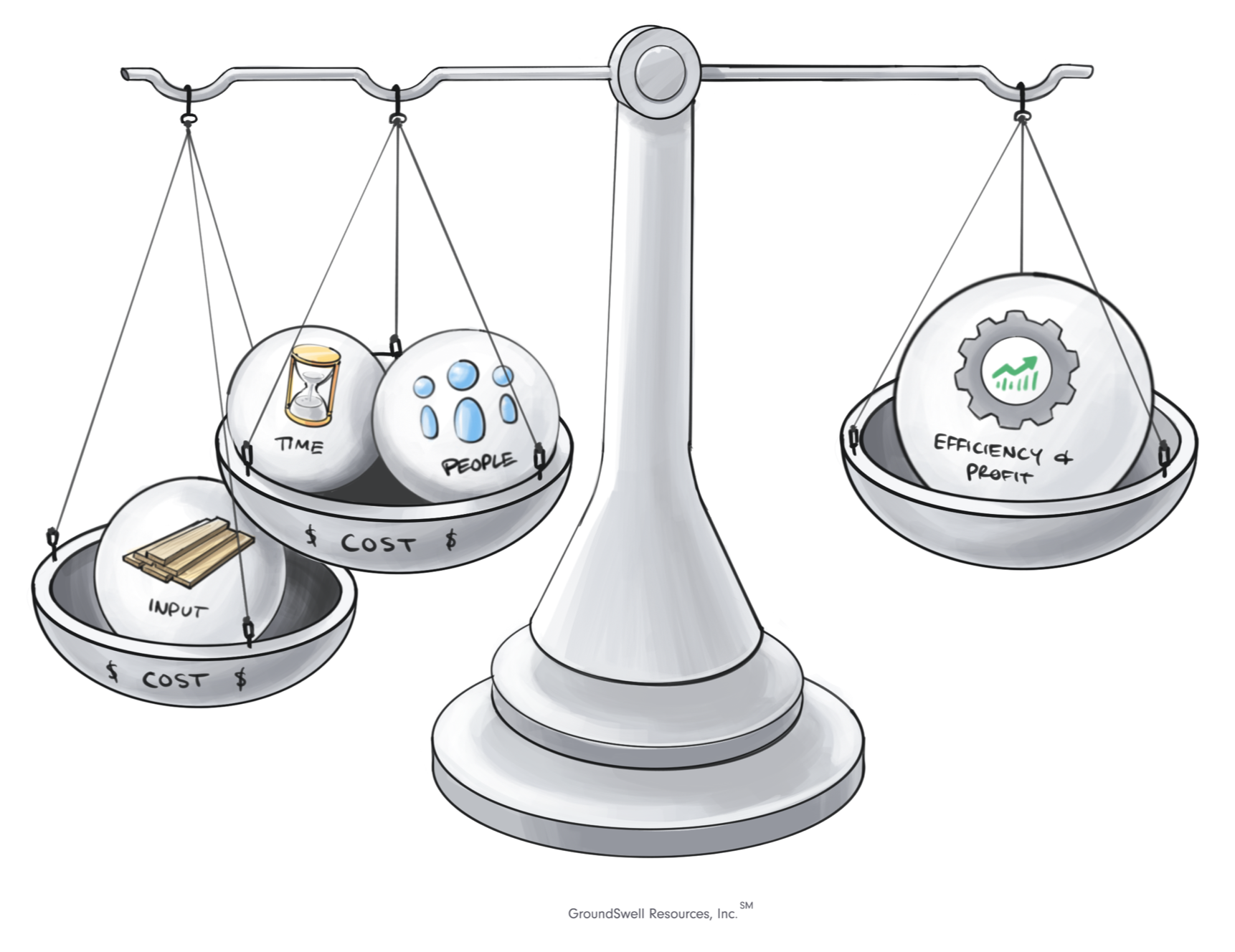Time-driven activity-based costing
How does it work?
GroundSwell’s time-driven activity-based costing (“TDABC”) budgeting utilizes time series analysis, or time drivers, to analyze a company’s historical financials as well as to create monthly and annual projections. We incorporate time drivers in three key areas:
Customer acquisition cost (“CAC”): Our analysis includes both the material/input costs such as advertising, SEO, PPC, etc. as well as the time and associated labor cost of your sales and marketing teams to acquire a customer. Based on extensive research and experience, this is the most effective method to analyze the real cost of your sales and marketing efforts. We like to see a company’s CAC between 10% and 20% of its revenue.

Product/service cost of goods sold (“COGS”): Our analysis includes traditional material costs such as the steel in an automobile as well as the time and associated labor costs making that automobile. Few companies include their labor costs in their COGS. As a result, they over-estimate their gross profit. We like to see a company’s gross profit between 50% and 60% of its revenue.
Administrative/corporate overhead: We even use time to analyze your administrative/corporate overhead. In addition to your traditional fixed costs such as rent, phone, utilities, insurance, etc. we assess your overhead costs including the labor time and cost associated with your administrative and management team. We like to partner with companies that have corporate overhead costs as close to 10% of revenue as possible.
In our long-term partnerships and investments, we implement time tracking software such as Quickbooks Time to supplement and verify our time series analysis. We also use data visualization software from Klipfolio to make it easy for our owner-manager partners to track their financial and operational results visually from their mobile phone or desktop computer. Finally, we use robotic process automation (“RPA”) software like UiPath to automate repeatable administrative tasks.
Our TDABC budgeting is the “organizational glue” of our Business Ownership PlatformSM. Where you and your team actually spend your time has a huge effect on your results. Knowing where you spend your time is vital when assessing management and leadership skills and will tell you what you really value. Time tracking also empowers you to make time for a sound strategy. According to a study by a top consulting firm, CEO’s of Fortune 500 companies only spend forty hours a year on strategy. How much time a year do you spend on strategy?
